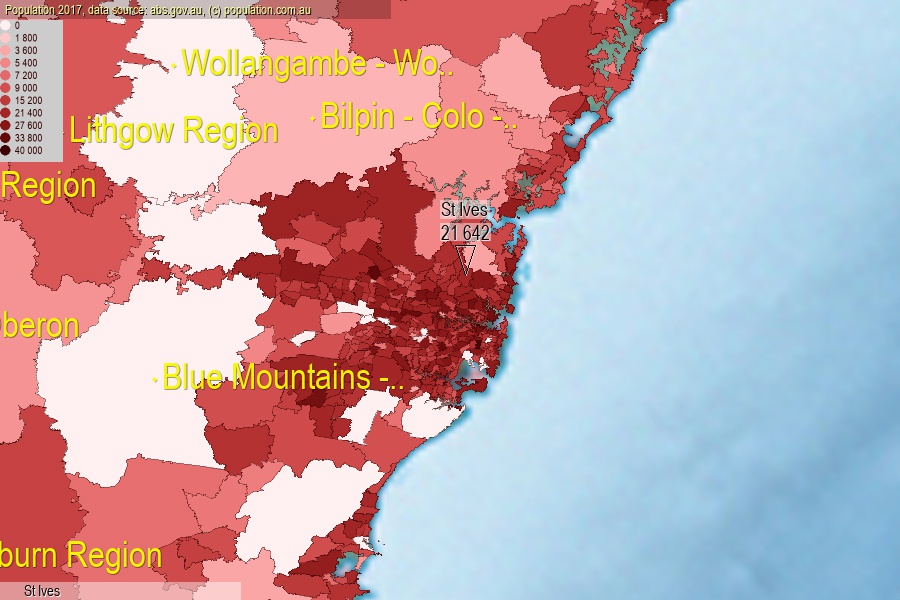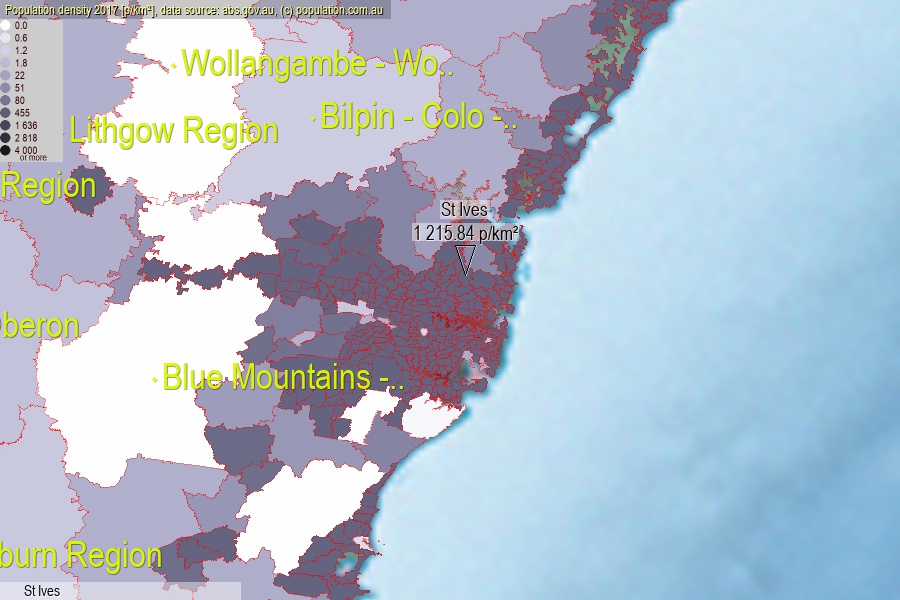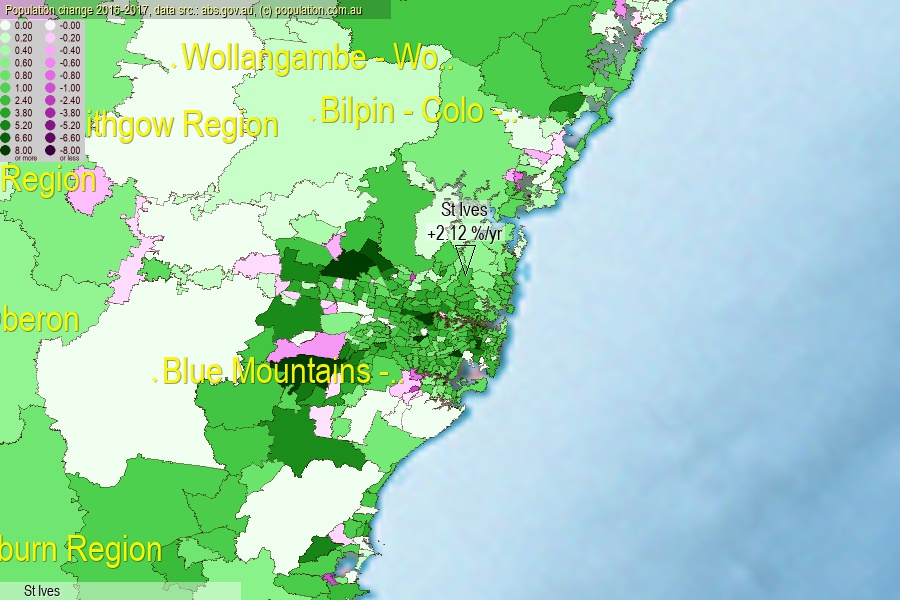 population.com.au
population.com.auLast official estimated population of St Ives (as Statistical Area Level 2) was 21 642 people (on 2017-06-30)[2]. This was 0.09% of total Australian population and 0.272% of NSW population. Area of St Ives is 17.80 km², in this year population density was 1 215.84 p/km² . If population growth rate would be same as in period 2016-2017 (+2.12%/yr), St Ives population in 2025 would be 25 594. [0]



Click to enlarge. St Ives is located in the center of the images.
Population [people], population density [p./km²] and population change [%/year] [2]
View borders » (new window) [4]
[1991-1992] -0.17 %/Yr.
[1992-1993] -0.80 %/Yr.
[1993-1994] -0.62 %/Yr.
[1994-1995] -0.93 %/Yr.
[1995-1996] -0.36 %/Yr.
[1996-1997] +0.28 %/Yr.
[1997-1998] -0.10 %/Yr.
[1998-1999] +0.08 %/Yr.
[1999-2000] +0.31 %/Yr.
[2000-2001] +0.53 %/Yr.
[2001-2002] +0.53 %/Yr.
[2002-2003] -0.23 %/Yr.
[2003-2004] -0.74 %/Yr.
[2004-2005] -0.83 %/Yr.
[2005-2006] -0.69 %/Yr.
[2006-2007] +1.33 %/Yr.
[2007-2008] +2.94 %/Yr.
[2008-2009] +2.60 %/Yr.
[2009-2010] +2.02 %/Yr.
[2010-2011] +1.35 %/Yr.
[2011-2012] +1.02 %/Yr.
[2012-2013] +1.50 %/Yr.
[2013-2014] +1.44 %/Yr.
[2014-2015] +1.79 %/Yr.
[2015-2016] +1.52 %/Yr.
[2016-2017] +2.12 %/Yr.
[0] Calculated with linear interpolation from officially estimated population
[1] Read more about SA2 and Australian Statistical Geography Standard (ASGS) on abs.gov.au
[2] Population data from Australian Bureau of Statistics (Population and density: 2017; change: 2016-2017)
[3] Digital Boundaries: Australian Statistical Geography Standard (ASGS) 2016.
[4] Border coordinates are simplifyed using Ramer-Douglas-Peucker algorithm.